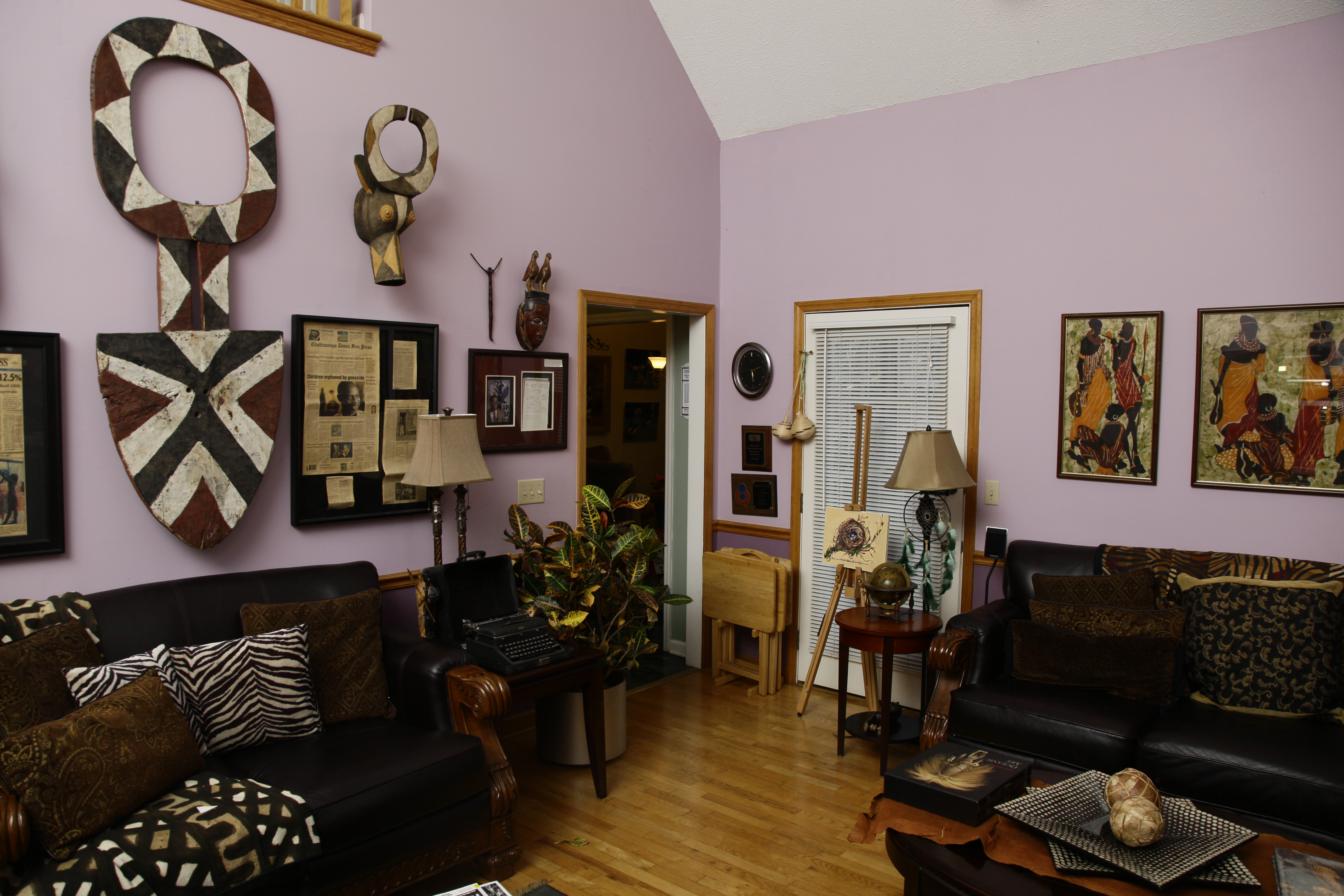Rugina home is showplace for 30-year collection of African art
Friday, January 1, 1904
Only February is designated as Black History Month in the United States, but in the home of Yozefu and Linda Rugina, the African culture is revered year-round.
The Ruginas' home is filled with a variety of African art ranging from Kenyan batiks to ceremonial masks to calaos -- stylized bird sculptures carved from one piece of wood.
Every room is a fascinating lesson in African culture, as Yozefu and Linda knowledgeably describe the authentic pieces, the tribes who made them and how they would have been used.
And not all of their collection is displayed.
"There are some things, ceremonial pieces, that are not meant to be displayed. We give them due respect, and they are not displayed in the house," Yozefu explains.
Born in Rwanda, raised in Tanzania and Kenya, Yozefu immigrated to the United States in 1975, sponsored by the J.W. Bray family of Dalton, Ga. After graduating from Georgia Tech in 1977, he returned to Dalton and began a job in carpet exportation.
"My first year, I went to Liberia, Egypt, Ivory Coast, Cameroon," he says, ticking off the list.
As he traveled, he began buying art from his homeland and shipping it home.
He and Linda met through mutual friends when she came to Dalton for her job as director of advertising for Belk at Walnut Square Mall. They moved to Chattanooga in 1992 and to their current home in Hixson seven years ago.
The pair's mutual interest in African art frequently led them on weekend getaways to visit shows, then they began selling pieces as well as collecting. Linda says they started with jewelry and clothing, then grew into sculptures and larger artwork.
For 20 years, the couple owned and Yozefu operated Rugina's African Village, located in the Chattanooga Choo Choo. After closing the business last year, he returned to the carpet/floorcovering business, while Linda has been director of the North River Civic Center since it opened in 2004.
Linda has decorated their home in a soft palette of neutrals that allows their art to be the focal point. Numerous oils painted by Linda add bold splashes of color to the rooms.
Toni Moegling, board member of the Friends of the North River Civic Center, is impressed by Linda's talent.
"Her work is vibrant, colorful and authentic," describes Moegling.
Visitors are greeted by their first calao just inside the front door. The 6-foot bird is a wood sculpture intricately covered in rows of brass that have been hand-cut into a zig-zag pattern then nailed in consecutive rows across the wood.
Nearby is a Ghana chief's stool, a wooden sculpture of a couple made by a craftsman from the Dogon tribe, and an ebony carving of three sisters. Black-and-white sisal and reed baskets in assorted sizes serve as accent pieces around the room.
"Those are wedding baskets. Women would bring gifts in those baskets, and the baskets would traditionally go in the bedroom," says Linda.
Two chairs made by the Bamun people illustrate the meticulous handwork of the Cameroon artisans. Every inch of each chair is covered in minuscule, multicolored seed beads that have been sewn into intricate patterns. Yozefu says these ceremonial chairs would have been made for the village king.
In the family room, leather furniture, live floor plants, Rwandan drums and throw pillows in zebra, tiger and other animal prints set the backdrop for impressive tribal masks mounted around the room. An animal-shaped wooden mask made by the Fang tribe hangs on the wall opposite the fireplace; it was used in village dances, explains Yozefu.
"The women would go inside, and the men would remain outside to dance to chase away bad spirits," he says.
An 8-foot kanaga mask fills the space between mantel and vaulted ceiling. The long, vertical artwork is decorated in bold black-and-white strokes, and Yozefu explains the mask could be worn by one or two people, or possibly even worn by a dancer on stilts.
"The mask is designed to deceive you. You never know if the wearer is looking at you or not," he explains.
A batik above the mantel was purchased while the Ruginas were in Kenya on safari. Lining the top of the mantel are an ebony carving from Kenya of "Three Wise Monkeys," a female's head in bronze from Nigeria and a second bronze of a man's head, which would have served as a placeholder for a king's crown or jewelry.
The Ruginas say that as the cost of authentic African art has escalated, so has the number of knockoffs, so you must be careful when buying.
"Authentic art is getting hard to find. People are trying to pass off reproductions from the Philippines as real," says Yozefu. "You have to be educated about the art and trust the people you are dealing with."
He suggests checking the finish of any wooden piece -- it shouldn't be smooth but bear the marks of hand tools -- and note whether the sculpture is made from one piece of wood, a true signature of authenticity.


